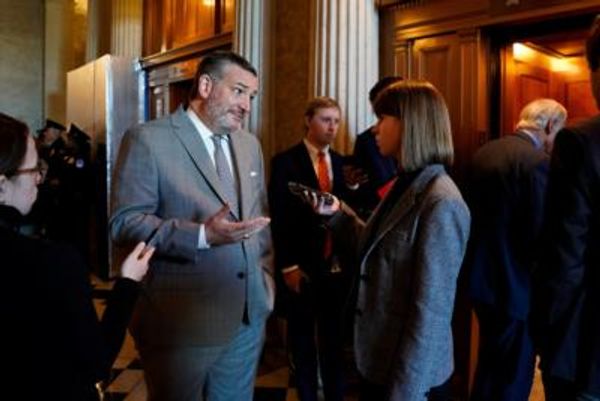
The failure of state governments to manage feral horse populations is “trashing and trampling” the natural values of the Australian alps, a parliamentary inquiry has heard.
The Invasive Species Council has expressed concern about the “devastating impact of feral horses in the Australian alps, and also the failure of state governments, particularly in New South Wales, to take adequate action to address this”.
“That failure is trashing and trampling the natural, Indigenous and historic values of the … Australian alps, a region of national significance which the commonwealth government has a responsibility to protect,” Jack Gough, an advocacy manager at the Invasive Species Council, told a Senate inquiry into the impacts and management of feral horses in the Australian alps.
At the public hearing on Wednesday, environmental groups expressed concerns about the animals’ impacts on sensitive ecosystems. In alpine areas of New South Wales and Victoria, including in Kosciuszko national park, feral horses are a threat to native plants and animals. Long-term damage has occurred through selective grazing, trampling and degradation of waterways.
“This is a very, very delicate ecosystem,” Clancy Barnard, of the Nature Conservation Council of New South Wales, told the inquiry. “Governments can protect it, or we can see it gone in our lifetime. We’re at a really critical stage here.”
A submission to the inquiry by the federal threatened species scientific committee said that horses were a known threat to 12 animal species, six of which are critically endangered.
Richard Swain, who has worked for 30 years as an Indigenous wilderness river guide within Kosciuszko national park, told the inquiry the environment there was under “constant sufferance” as a result of damage from horses.
Swain, an honorary associate professor at the Australian National University, said: “If you want to find a kurrajong tree, which is really important for our string making and our tucker and dreaming, you have to go around the toilet blocks because it’s about the only place where the feral horses don’t frequent.”
Aerial surveys conducted last year suggested there were around 18,814 feral horses in Kosciuszko national park, an increase of more than 30% in two years. “We now have somewhere between 14,000 and 25,000 feral horses up there,” Gough said.
Modelling commissioned by the Invasive Species Council showed that keeping populations stable in NSW would require 2,800 feral horses to be culled yearly.
NSW has a target, set by the previous government, to reduce feral horse populations to 3,000 horses by June 2027. The Invasive Species Council estimates around 6,000 horses per year would need to be culled to reach that target – compared to a current annual cull rate of around 1,050 horses. Modelling by the federal environment department estimates a lower figure of about 4,000 horses a year.
The ACT environment minister, Rebecca Vassarotti, told the inquiry that “the misalignment of policy between the ACT and the NSW governments regarding feral horse management in the Australian alps is stark”.
The ACT, which currently has no established feral horse populations, has a zero-tolerance approach to the horses.
Vassarotti said the federal government had responsibilities under the Environment Protection and Biodiversity Conservation (EPBC) act to lead coordinated management responses across the ACT, NSW and Victoria.
Representatives from the federal environment department said the government had “levers at its disposal” to manage the impact of feral horses, such as the ability to introduce regulations under the EPBC act.
The environment minister, Tanya Plibersek, and state and territory counterparts announced in June they were reinstating the Alps Ministerial Council to coordinate management efforts. While a national feral deer action plan exists, the department does not have a feral horse action plan.
Groups including the Australian Veterinary Association expressed support for the aerial shooting of horses as a humane and effective population control method.
Proposed changes to the NSW government’s management plan to allow for aerial control are currently open for public comment. “The amendment is being considered because the currently authorised control measures will not enable a population to be reduced to 3,000 horses by 2027, as required by law,” NSW’s acting environment and heritage coordinator general, Atticus Fleming, told the hearing.
In some regional towns, local residents are opposed to the culling of feral horses, and the Senate inquiry heard from several brumby groups. During the hearing, the independent senator David Pocock expressed concern about submissions the inquiry had received about “high levels of abuse from brumby groups to national parks staff who are just doing their jobs”.
Conservation groups said there had been a shift in public sentiment around the issue, as awareness has grown. “I think we kind of got to a consensus of ‘this needs to happen’, and the public has really come along on that journey,” Barnard said.







